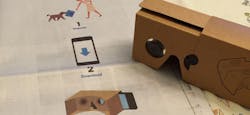What is the scariest moment when you’re in a discussion with 30+ people about a new topic? Is it learning about what people think? Realizing no one knows what they’re talking about?
For me, it’s trying to bring something “out there” to the conversation that will knock everyone’s socks off.
These moments are memorable. For example, I recently stopped myself mid-conversation when I realized that if I continued my thought, I would negate the reason we were discussing the topic of designing a new facility altogether.
We were discussing workplace strategies. Someone chimed in that we should think past the Millennial Generation Y—to the following generation, Generation Z! I quickly agreed, “Yes, Generation Z is the Digital Generation. The investment you are making in this new facility will accommodate those who are in diapers today; who will have grown up with a rattle in one hand and a handheld electronic device in the other.”
'My crystal ball thinks Digital Generation Z will be followed by Virtual Generation Z+. If my forecasting is correct, there may be no need to spend the capital to design new buildings.'
It was an appropriate focus for the client’s core mission, built upon technology and security. A huge leap and cultural change, the group was getting somewhere, thinking about their own mission and goals instead of cool, glossy-published, conference-presented office trends.
But that’s where I stopped myself mid-thought. Because my crystal ball thinks Digital Generation Z will be followed by Virtual Generation Z+. If my forecasting is correct, there may be no need to spend the capital to design new buildings.
One might think this is too out there, but this weekend Google and the New York Times sent Virtual Reality (VR) cardboard devices with the newspaper, allowing subscribers to download an app and experience VR in the comfort of their own homes.
If this isn’t influencing the future, what is?
It’s not inconceivable, if I am correct, that the generation after next, the “Virtuals,” will work from home (or anywhere else) and use VR to plug in to an employer’s virtual work environment.
What does this mean to current discussions? Users and clients need to push the envelope and discuss what will bring the Virtuals to the “office.”
Think social. Future facilities will be based solely on whatever it takes for an employee to network with others, gather with large groups to be informed, and, most importantly, to socialize: eat, drink, and even work out together.
Can’t wait!
About the Author: Rachel Park is a Strategic Facilities Planning Principal based in HDR’s Princeton, N.J., office. She graduated from Cornell University with a degree in Strategic Facilities Planning and Design & Environmental Analysis; since then she has spent over twenty years working in-house for Fortune 500 companies and within architecture firms, gaining experience on both the service and the client side.
About the Author
HDR
HDR's Insights blog is written by our employees. While we are most well-known for delivering architecture and engineering services—for adding beauty and structure to communities through high performance buildings and smart infrastructure, we provide much more than that. We create an unshakable foundation for progress because our multidisciplinary teams also include scientists, economists, builders, analysts and artists. Our thought leader bloggers represent offices from around the world and write about ideas, experiences and insights into our practice and the greater design community. Follow us on Facebook, Instagram, LinkedIn, Twitter, and YouTube.
